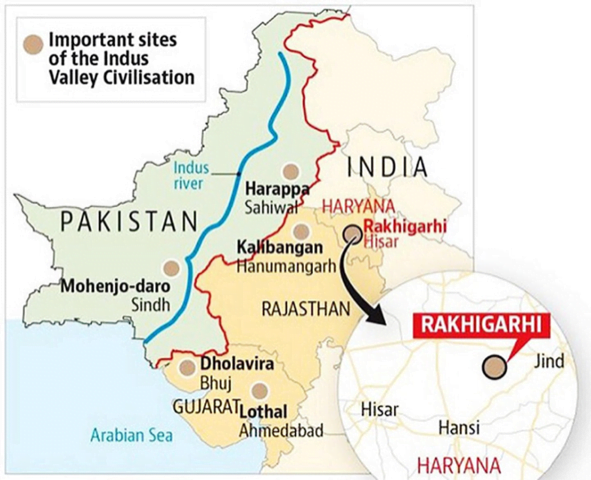UPSC Articles
Language in Indus Valley Civilization
Part of: GS Prelims and GS- I – Ancient history
In news A new research paper has provided some new insight on the linguistic culture of the Indus Valley Civilization (IVC).
- Earlier, a study found that the diet of the people of IVC had a dominance of meat, including extensive eating of beef.
- In July 2021, UNESCO announced the Harappan city of Dholavira in Gujarat as India’s 40th world heritage site.
Key findings
- IVCs have their language roots in Proto-Dravidian, which is the ancestral language of all the modern Dravidian languages.
- The speakers of ancestral Dravidian languages had a greater historic presence in northern India including the Indus Valley region from where they migrated.
- Proto-Dravidian was one among several languages being spoken in the Indus Valley region.
- The research claims that there were more than one or one group of languages spoken across the one-million square kilometre area of IVC.
- Since people of ancient Persia had functioned as intermediaries between Mesopotamia and IVC traders, while exporting IVC’s ivory, they had arguably spread the Indic words to Mesopotamia as well.
What is Indus Valley civilization?
- It is the earliest known urban culture of the Indian subcontinent.
- It is also called Harappan Civilization after the first city to be excavated, Harappa (Punjab, Pakistan).
- It was established around 3300 BC. It flourished between 2600 BC and 1900 BC.
- It extended from Sutkagengor (in Balochistan) in the West to Alamgirpur (Western UP) in the East; and from Mandu (Jammu) in the North to Daimabad (Ahmednagar, Maharashtra) in the South. Some Indus Valley sites have also been found as far away as Afghanistan.
- Important sites:
- Kalibangan (Rajasthan), Lothal, Dholavira, Rangpur, Surkotda (Gujarat), Banawali (Haryana), Ropar (Punjab).
- In Pakistan: Harappa (on river Ravi), Mohenjodaro (on Indus River in Sindh), Chanhudaro (in Sindh).

News source: IE













